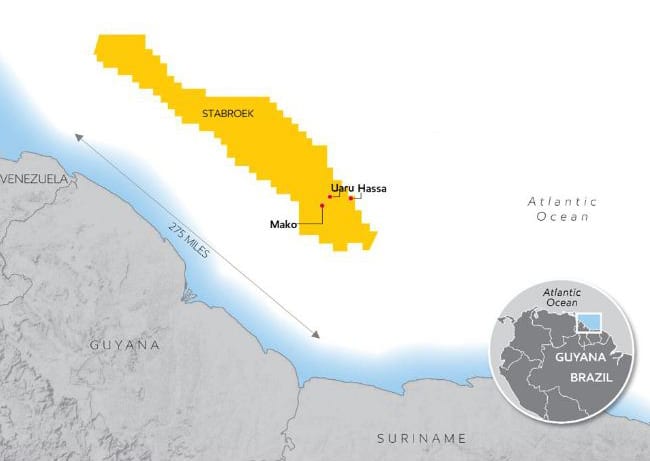ExxonMobil affiliate, Esso Exploration and Production Guyana Limited (EEPGL) has assured authorities in Guyana that its proposed development at Uaru will abide by the strictest international standards and best practices for gas flaring and produced water.
Application process for Exxon’s fifth Stabroek Block development underway
In its project summary, EEPGL said Uaru will be designed for no routine flaring of associated gas. The gas will be used for fuel or will be reinjected into the reservoirs to improve oil recovery. EEPGL said this design is consistent with ExxonMobil’s plans to align with the World Bank’s initiative to eliminate routine flaring by 2030.
Nevertheless, EEPGL said it is important to recognize that some flaring is necessary or inevitable to maintain safe and reliable oil and gas operations. EEPGL explained that such flaring will for example include well testing, background operational and safety flaring, planned maintenance activities, and intermittent unplanned events associated with process upsets or temporary infrastructure (equipment) malfunction. EEPGL highlighted that these gas streams are not the focus of the World Bank’s Zero Routine Flaring (ZRF) by 2030 Initiative, which concentrates on other types of flaring.
Safety comes first: ExxonMobil Guyana talks up HSSE policy | OilNOW
OilNOW understands that the ZRF 2030 Initiative pertains to routine flaring, defined as flaring that occurs during the normal production of oil, and in the absence of sufficient facilities to utilise the gas on-site, dispatch it to a market, or reinject it. The 2030 Initiative does not include non-routine flaring events. These can include exploration and appraisal; initial well flow-back; well servicing; process upset; safety or emergency situations; equipment or gas handling infrastructure malfunction; or de-pressurising equipment for maintenance. The 2030 Initiative also excludes purge and pilot flaring necessary for safe flare operation, combustion of hazardous or polluting emissions, such as volatile organic compounds and hydrogen sulphide.
Furthermore, EEPGL said the floating production, storage and offloading (FPSO) vessel will treat produced water before discharging it overboard. It assured that “the treated produced water will be discharged overboard as per industry best practices.” In addition, EEPGL said the FPSO will use treated seawater for cooling and injection into the reservoir for additional pressure maintenance. Here again, it said, “The cooling water will be discharged overboard as per industry best practices.”
Exxon’s 5th project could produce up to 275,000 bpd, with first oil as early as 2026
Overall, EEPGL said the Uaru Project will contribute positively, directly and indirectly, to economic growth in Guyana, including by way of increased national revenues, local procurement of select goods and services, and increased employment opportunities which drive associated beneficial “multiplier” impacts throughout the local economy.



